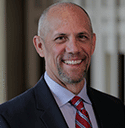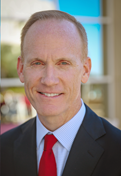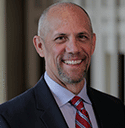Harry S. Dent Jr.'s Blog, page 124
December 22, 2015
The Fed’s “Evolution” Has Put Them in a Precarious Position
 U.S. Treasury bonds yields were higher today amidst news that the economy grew by 2% in the third quarter.
U.S. Treasury bonds yields were higher today amidst news that the economy grew by 2% in the third quarter.
Meanwhile, the stock market inched higher… but is down from last week after the Fed made its decision to raise the Fed Funds Rate.
It could be low oil prices – the lowest we’ve seen in years. Or it could be that investors aren’t convinced the market can actually handle higher interest rates.
The Fed has been fighting waning demographics and the “winter” economic season since bailing out financial institutions in 2008.
They’ve evolved from saving the world from temporary financial crisis… to virtually controlling financial markets today.
Demographics alone should have resulted in a natural pullback in stocks, deleveraging of debt, and other deflationary pressures.
But the Fed didn’t stop after it helped avert the initial financial calamity. It realized deflation was a major concern and started printing money to create inflation.
However, with the S&P 500 up nearly 200% since the bottom in 2009, it seems the Fed mixed up consumer price stability with stock prices.
That could be changing. The stock market is poised to close negative for the year. And last week, I noted for Treasury Profits Accelerator subscribers that the yield curve between short-term and long-term Treasurys appears to be flattening.
When that happens, bond investors believe there is less risk of inflation and overheating in the economy down the road. That means deflation is a likely course for the future.
Tomorrow, keep an eye out for the personal income and outlays report. This is the report the Fed looks at most closely, as it includes the Personal Consumption and Expenditures (PCE) index.
While last week’s Consumer Price Index (CPI) showed inflation of 2%, the Fed’s target, the PCE came in at 1.3% last month.
Treasury Profits Accelerator readers and I will pay close attention to this to see if my system triggers a new trade alert.

Lance Gaitan

How I Got Audited by the IRS and Won
 A month ago I got a love letter from the IRS. Well, it didn’t exactly express emotion, but it definitely made clear they wanted to see me, and soon.
A month ago I got a love letter from the IRS. Well, it didn’t exactly express emotion, but it definitely made clear they wanted to see me, and soon.
I was being audited.
The tax year in question was 2013, and they wanted to focus on K-1’s, basis for stock transactions, charitable contributions, and health insurance payments. I did what anyone would do. I called my accountant.
He asked me to return all my tax documents to him, at which point he recalculated my taxes. The end result was a difference of $107, and a change in how two numbers were reported.
He was stumped as to what they were after. So I called the IRS, made my appointment, and went in with an armful of documents and my accountant on speed dial.
The agent was a nice guy who clearly wanted to make the experience as pain-free as possible. We sat down, finished the pleasantries, and then he launched into the first topic.
His opening salvo was, “The K-1’s filed with us do not match what you reported on your return. The royalties and interest from one partnership, which sent us two K-1’s, have higher amounts. So the flow through of funds from Schedule E to your return doesn’t match our records. Is the missing balance reported elsewhere on your return?”
That’s when it struck me. The typical taxpayer is dead meat.
I’m not a novice when it comes to things financial. I’ve got an undergrad in finance, lots of hours of accounting while in college, an MBA, and many years of experience in the securities industry.
It is because of all this that I would never do my taxes. The enormity of the task, coupled with the changing laws, makes the process not only lengthy but fraught with danger.
I know about K-1’s. I had an inkling of the difference that he was talking about. But I still whipped out my cell phone and called my accountant.
The three of us talked through it and I figured out that the second K-1 had to do with my IRA, not my taxable investment account.
Since it was a smaller amount inside a tax-deferred account, the income and royalties fell under the threshold of what had to be reported. The IRS agent said the second K-1 didn’t show as being for a retirement account, but that the amount was small enough we could put it aside for the moment and see how the rest of the day went.
What would a typical taxpayer do?
The agent told me that he gets a lot of people through the door who are living paycheck-to-paycheck, and have either done their taxes the best they can, or paid a preparer who did a poor job.
Even if they correctly followed the directions for calculating their taxes, typically they don’t have all of the documentation necessary to substantiate the deductions. So they end up with a hefty tax bill even if they did everything right in theory. The agent said he felt the worst for people who pay way too much for simple returns to be prepared, and still end up with messed up filings.
What I got out of both of these things – me not filing my own returns and many people doing their best and still messing it up – is that the system is too complicated.
Think about it. Why should we collectively spend billions of dollars each year simply trying to figure out how much we’re supposed to be sending to Uncle Sam? Doesn’t it seem idiotic that it takes a lot of money to determine how much money we owe?
Of course, we don’t spend big bucks to calculate taxes. We spend the money to find deductions.
I recently read that politicians who argue about tax rates are silly. Anyone can apply a percentage to income. The hard part is determining what counts as income in the first place, which is where the thorny issue of deductions comes into play, and where all the craziness happens on our personal returns.
We are now less than a year away from the 2016 presidential election. So far, only a couple of candidates have put forth clear proposals for tax reform.
We should demand such plans from all of them, as well as the speaker of the house and the senate majority leader. It’s time we quit penalizing our citizens because they didn’t comply with a tax code that, along with history, regulation, interpretations, and prior versions, now spans some 70,000 pages.
Anything requiring that much interpretation is meant to support just one industry – lawyers.
That shouldn’t be the basis on which we build the annual funding of the U.S. government. We deserve to treat ourselves better by demanding that our elected officials develop meaningful reform.
As for my own audit, it went quickly.
I only called my accountant twice. At the end, the IRS agent said my preparer did good work, that I was organized, and that by his calculation I would owe them just $39. Since that’s below the $200 threshold to change a return, mine was determined to be a “no-change” audit and I didn’t have to pay.
In my mind I knew the $39 was because of the K-1 for my IRA, and I almost pulled up the supporting documents on my laptop to prove that I didn’t owe the money.
Then I reconsidered. Should I possibly annoy this pleasant agent who just gave me a “get-out-of-the-IRS-without-paying” pass just to prove I am right, or should I just say, “Thank you?”
I thanked him for his time, wished him a merry Christmas, and made my getaway as fast as possible.

Rodney
December 21, 2015
People Just Don’t Get Demographics
 I love reading Barron’s every Saturday morning. It’s part of my weekly ritual, and the subject matter seems to go well with my morning cappuccino.
I love reading Barron’s every Saturday morning. It’s part of my weekly ritual, and the subject matter seems to go well with my morning cappuccino.
But a few weeks ago, I read an article so fundamentally misguided, it ruined an otherwise perfectly good brew (see “Pretenders to the Presidency” from the November 30 issue).
It was so bad, I actually tore it out and left it on my desk for a few weeks to let it settle. But I’m finally ready to tear it to shreds.
The piece, which essentially summarized a paper co-written by a London School of Economics professor and a Morgan Stanley economist, contends that changing global demographics – specifically a shrinking workforce – will result in slower growth, higher interest rates, higher inflation and higher real wages.
Well, on the first count, I actually agree. An aging North America, Europe and East Asia will almost definitely cause growth to slow. In fact, growth is already slowing and has been for years.
But the belief that an aging population will lead to higher interest rates, inflation, and real wages shows a complete misunderstanding of demographics… not to mention total ignorance of recent history in Japan.
And yet, that’s the problem. Nearly everyone recognizes these days that demographics matter. They just don’t understand them, and thus draw the wrong conclusion.
It’s really not that hard to explain. Economists focus on supply and completely ignore demand. They view an older person as one less worker rather than as one less consumer. And that’s their fatal mistake.
Most labor is pretty expendable these days. When a job gets expensive, it simply gets automated away. We got rid of elevator operators a long time ago because it’s cheaper to have the passengers press the button themselves.
Sure, labor shortages in certain in-demand professions like brain surgery and engineering may lead to wage inflation. But for most rank-and-file workers, that is absolutely not the case.
And while technology can replace an employee, it can’t replace a shopper. That’s something else that economists fail to appreciate.
Once we age into our late 50s, we start consuming less of virtually everything but health care.
Less spending means less aggregate demand in the economy. And this is why Japan has struggled to spur demand for the past two decades and why it still suffers from deflation and oversupply, despite having a shrinking population and workforce.
We’ll have inflation again someday. It will happen, and demographics will play a part.
But it won’t be the elderly causing it. It will be millennials settling down, getting mortgages, and falling into the trappings of middle-class family life.

Charles Sizemore
Editor, Dent 401k Advisor

Real Estate: If You Don’t Love It, You Better List It
 I suppose you could say we have World War II to thank.
I suppose you could say we have World War II to thank.
Upon returning from the war, soldiers had their GI benefits to enjoy and a deep-seated desire to start a family. And so was born (quite literally) the baby boom, and an accompanying surge in home buying.
Out of the ashes of destruction arose an American middle class and the first generation able to more broadly buy homes with long-term mortgages.
Their kids, the now infamous baby boomers, decided this home-owning thing was a good idea. When their turn came in the 1970s, they surged into the real estate sector like a pig moving through the python!
By early 2006, they had convinced themselves and everyone else that real estate only goes up…
What a painful, rude awaking the 2006 to 2012 housing collapse was! I strongly warned of this in late 2005 in my newsletter. With 2008 the hardest time during that six-year period, and the subprime crisis of monumental proportions, it blew hardworking Americans out of the water and then drowned them in underwater mortgages, debt defaults and disgrace.
Thanks to my demographic and cycle research, this event was no surprise to us…
Personally, I was out of real estate early enough for the downfall between 2006 and 2012 to not impact my wealth in any way. And I’d warned my subscribers many times about the looming crisis, so many of them were also safely out of the sector when the sword fell as well.
I’ve actually received many notes from readers over the years telling me how my warnings saved them a fortune when the real estate bubble burst. One business person in our Network told me that he was spared millions by getting out of his real estate just before the crash. He was in the process of buying a building in South Florida in 2006 that was going to cost him somewhere between $10 million and $15 million. After attending one of our Demographics Schools (pre Irrational Economic Summit days) in Minneapolis, St. Paul, he hauled his board of directors out to a meeting with Rodney and me, and based on our research, cancelled that purchase. He’s grateful he did!
As it turned out, that real estate crash was worse than the one the Henry Ford generation endured in the early 1930s. The last crash saw real estate down 34% (compared to only 26% lost during the Great Depression years), with markets like Las Vegas, Phoenix and Miami losing as much as 50% or more!
I wish I could say that was it. I wish I could say that all the reports you’ve seen lately are proof that the real estate market has turned around again and home prices are set to rise for the next 18 years.
Unfortunately, I can’t, which is why I remain out of the real estate market.
You see, bubbles always go back down to where they started – and often a bit lower. I have chart after chart (after chart) that shows this happening time and again throughout history. It’s so reliable you could bet on it and win.
And right now, real estate would have to go down a total of 55%-plus to erase the bubble gains from just early 2000 – 40% or more from here after the bounce. That means, despite the “positive” reports, we haven’t seen the worst of the real estate meltdown yet!
Let me show you…
Look at how much new home sales fell from July 2005. The chart below adjusts for rising population – showing the ratio of new homes to the U.S. population – which makes that collapse even more dramatic.
The drop was 82% (adjusted for new homes per person)! This hasn’t happened since the 1970s and was much worse than even in the Great Depression.
What’s going on here?
Well, real estate is the only durable thing we buy that lasts nearly forever. We build a home and multiple generations live in it. When the baby boomers moved through the real estate market, they built more homes to accommodate their bigger numbers. But the millennial generation now following, even when adjusted for immigrants, doesn’t quite reach that same peak set by their predecessors.
In short, we won’t need more real estate for decades to come… especially as the baby boomers downsize and die, leaving more homes vacant. When I adjust real estate buying trends for peak buyers at age 41 minus dyers at age 79 in the U.S. (who are sellers, of course), the net demand for new homes actually declines into 2039 – that’s 24 years from now!
This will mark the greatest shift in real estate in history.
The greatest long-term bust into 2020-plus will follow the greatest long-term boom from 1933 to 2006.
That should not be a surprise as real estate in Japan has declined 60% (80% commercial) and never bounced significantly for 24 years!
You better really love your real estate, for business or personal reasons, to own it for decades. If you don’t, sell it. As I say in Chapter 3 of The Demographic Cliff: “Real estate will never be the same!”
And don’t expect to get rich by simply sitting on real estate anymore. You won’t enjoy the appreciation your parents, grandparents and great grandparents once did. All you can hope for is positive cash flow if that is feasible even in a downturn ahead – or if you can own cheaper than you can rent.

Harry
December 18, 2015
This So-Called Rate Hike Is Completely Jerry-Rigged
 It’s official.
It’s official.
This week the Federal Reserve raised the key overnight Fed Funds rate by 0.25%. The move was discussed, debated, argued, and telegraphed to death. We all heard about it until we hoped anything else financial would happen so we could finally put the tired story to rest.
Now that the rate hike is on the books, we can start talking about outcomes, like how in the world the Fed intends to enforce the rate hike, what it means, and what comes next.
The first one is not so simple, the second is annoying, and the third is downright depressing. But we’d better start planning for this today, because it will definitely affect our investments in the months to come!
This rate hike is unlike any other. It comes on the heels of several quantitative easing programs that have dumped trillions of new dollars into the banking system.
Before the financial crisis, banks held about $60 billion of excess reserves at the Fed. These are funds above and beyond their required reserves.
Today, excess reserves total about $2.6 trillion, which represents part of the money the Fed printed and then used to buy bonds. Typically this cash would have flowed into the economy through lending, but in 2008 the Fed started paying interest on excess reserves, which has kept the funds out of circulation.
With so much extra cash in their accounts, banks have almost no need to borrow from each other.
This creates a problem for the Fed because adjusting the rate at which banks lend to each other, called the Fed Funds rate, is how it historically enforced its interest rate policy. Starting this week, the Fed will have to use new, largely untested tools.
Since there is almost zero demand for money between banks, the Fed is increasing the interest it pays on excess reserves from 0.25% to 0.50%.
At the same time, the Fed intends to lend out up to $2 trillion of its own stash of bonds in the overnight repurchase market. It will lend these to banks, money market funds, and other institutions for one night, with an agreement to buy the bonds back the next day at a slightly higher price, effectively paying the counterparty 0.25% interest.
It’s more than a little backwards.
The upshot is that instead of banks paying each other the higher rate of interest after a rate hike, now it’s the Fed, which means it’s really me and you, since the Fed gets money by taking value from the rest of us. At the new, higher rate, this is about $10.5 billion per year that is nothing but a gift to banks.
And don’t expect your deposit rate to move higher anytime soon.
Banks pay interest to depositors to attract and retain cash. Right now, they don’t need your money.
As for what lies ahead, expect uncertainty, which is a word the markets hate.
In her press conference after the Fed meeting, Chair Yellen went to great lengths to explain that subsequent rate changes would not be mechanical, incremental hikes at regular intervals.
Instead, she described the rate of increase as gradual, with each decision depending on market factors affecting inflation and employment.
Sound familiar?
The most powerful financial regulatory body on the planet once again told the world, that while they think rates will be higher over the next couple of years, they will examine every piece of evidence as it comes along.
In doing so, they reserve the right to raise rates, keep them the same, or even lower them if necessary. All of which leaves investors hanging on every data point as we approach each Fed meeting over the next couple of years, agonizing over whether or not there is enough strength for higher rates.
We don’t think there will be.
Even though the Fed’s consensus estimate is for overnight rates to reach near 1.50% by the end of 2016, we see the U.S. economy rolling over next year, which should make the Fed more accommodative, not less.
Whatever they choose to do, let’s hope that Janet & Company buy a really big bullhorn and use it to make their intentions known. Otherwise, we’re all going to be stuck spending a lot of time, and spilling a lot of ink, on the same old subject for the next several years.

Rodney
December 17, 2015
Taper Tantrum 2.0: Will the Next Four Months Be Similar?
 While most central banks around the world are lowering interest rates, the United States Federal Reserve decided yesterday to begin raising them. So we’re now officially in the divergent policy environment that I’ve spoken about for well over a year now.
While most central banks around the world are lowering interest rates, the United States Federal Reserve decided yesterday to begin raising them. So we’re now officially in the divergent policy environment that I’ve spoken about for well over a year now.
Straight away, I’ll say this divergent environment should treat stock pickers well. In particular, actively-managed investment strategies that are able to look outside the stock market – and play both the long and short sides – should be able to outperform a passive buy-and-hold strategy.
Of course, the Fed’s decision is still fresh. So it’ll be a while before we can truly assess how investors react… and determine the winners and losers of tightening policy.
But we can find clues by looking back to 2013, when then-Chairman Ben Bernanke began warning that higher rates were on the horizon.
Bernanke’s message sent a wave of volatility through global markets. It unleashed divergent market trends, essentially separating the (likely) “haves and have-nots” of the post-zero-interest-rate-policy world.
Let’s take a look at how global markets performed between May and September of 2013 – the Taper Tantrum.
Treasury Yields Skyrocket
Naturally, the mere suggestion of the Fed’s desire to tighten sent Treasury yields higher. But the magnitude of the move was extreme by historical standards.
Between May 2 and September 6, the 10-year Treasury yield went from 1.61% to 2.98%. That’s a massive, 80% moonshot in about four months.
And it was truly an unprecedented move. Going back 50 years, I can’t find one instance of a larger increase in such a short amount of time.
Of course, bond markets around the world sold off in unison during this period. But a closer look shows there were some flavors of bonds that took Helicopter Ben’s warning harder than others. Take a look…
The sell-off in U.S. Treasury bonds shows a clear trend: long-term (TLT, far left) suffered more than medium-term (IEF, middle), which suffered more than short-term (SHY, far right).
This is interesting because it shows bond investors might have bought into the Fed’s message, believing that a hot U.S. economy, and perhaps even inflationary pressure, was just around the corner.
U.S. Stocks Beat Foreign Stocks
The Taper Tantrum also created divergences between global stock markets.
U.S. stock indices were the clear winners. While foreign stocks, particularly emerging-market stocks, didn’t fare quite as well.
Take a look…
First, it’s interesting that the Russell 2000 (IWM, far right) and Nasdaq 100 (QQQ, right next to it) were the top-performing stock indices through the Taper Tantrum. This suggests that stock investors’ knee-jerk reaction was not: “Oh crap, they’re taking the punch bowl away!”
Instead, Bernanke’s warning reminded investors that U.S. stocks were the best game in town. Investors piled in, betting that that outperformance would continue for a while longer (and indeed, it has). A majority of U.S. sectors, too, beat foreign stock markets during this time – showing the preference for U.S. stocks was widespread.
Meanwhile, as U.S. indices climbed between 4% and 10% higher, emerging-market stocks (EEM) lost nearly 6%. In particular, Brazil’s stock market lost 14%… and India’s was down 17%.
Now let’s take a look outside the stock market.
Higher Borrowing Costs, Without Inflation?
Rate-sensitive investments reacted swiftly to Bernanke’s warning.
The Utilities sector and real estate investment trusts (REITs) are notoriously dependent on debt financing. So as they braced themselves for an environment of increasingly higher borrowing costs, investors lowered their return expectations from these rate-sensitive niches.
Utilities stocks (XLU) lost 9% during the Taper Tantrum and REITs (VNQ) fell 12%. Take a look…
Interestingly, gold prices (GLD) also fell during the Taper Tantrum. That’s a bit counterintuitive – since the Fed’s message should have prompted investors (particularly gold bugs) to worry about inflation, which would have given gold prices a boost.
Instead, lower gold prices suggested that deflation, not inflation, was still the dominant trend – despite what the Fed was saying.
And finally… volatility.
The Taper Tantrum sent the Volatility Index (VIX) 22% higher. This shows that investors were either pessimistic about future market returns… or that they had no clue what to expect from a post-punch bowl market.
Either way, the sudden jump in volatility acted as confirmation that investors had become fixated on the Fed’s every move – a theme that (unfortunately) continues to dominate global markets even today.
Will This Time Be Different?
There’s no guarantee that markets will react to yesterday’s Fed decision, over the next four months, the same way they reacted during the four-month Taper Tantrum in 2013.
For one, we’re in a different place now than we were then. U.S. stocks are more overvalued. Foreign stocks are more beaten down. And, oh yeah, a nasty little oil crisis popped up… along with a rapidly deteriorating junk bond market.
What’s more, we might see investors “buy the rumor, sell the news.” Meaning, they might respond to the rate-hike becoming “news” differently than they reacted to it being a “rumor.”
I hate to say it, but this time might be different.
Rather than assuming markets will follow the exact Taper Tantrum course, I’ll be watching closely for opportunities amongst the winners and losers of the Fed’s tightening cycle.

Adam O’Dell, CMT
Chief Investment Strategist, Dent Research

December 16, 2015
The Fed Hiked a Quarter Percent: Now What?
December 15, 2015
Consumer Price Index Gives Fed the Green Light!
 Typically, there are two types of people in the inflation camp.
Typically, there are two types of people in the inflation camp.
You have the people who follow the Consumer Price Index (CPI), which has come to represent inflation itself. But this metric has been so heavily manipulated over the years… it’s biased at best.
Then you have everyone else who has seen the cost of goods mostly rise, for whom deflation just seems a bad joke.
Personally, I don’t think I’m your typical “Joe Six-pack,” but the drop in commodity prices sure hasn’t helped my standard of living. And it’s not like I have a lot of extra cash lying around just because gas prices have fallen about 50% in the last couple years (I must not drive that much).
Wherever you stand on the matter, the fact remains that the Consumer Price Index is the most widely followed inflation tracker, and one that matters a great deal to the Fed.
December 14, 2015
The Euro Crisis Is Only Just Beginning
 I’ve been shocked over how much QE and stimulus the central banks have signed on for in the last seven years, but they’re finally starting to reach their limit.
I’ve been shocked over how much QE and stimulus the central banks have signed on for in the last seven years, but they’re finally starting to reach their limit.
The U.S. already did in 2014 when the Fed finally tapered. And this week, the markets are betting on a rate hike – never mind the
December 11, 2015
What If the Fed DOESN’T Raise Rates?
 We’ve gotten it into our heads that Fed Chair Janet Yellen is on her way down from the mountain top carrying stone tablets etched with the details of a rate hike. We don’t know exactly what form it will take, but let there be no doubt – the financial gods have spoken, so a rate hike there will be!
We’ve gotten it into our heads that Fed Chair Janet Yellen is on her way down from the mountain top carrying stone tablets etched with the details of a rate hike. We don’t know exactly what form it will take, but let there be no doubt – the financial gods have spoken, so a rate hike there will be!
But it’s not that simple.
The Federal Open Market Committee (FOMC) is the group that determines monetary policy. This group must reach a consensus on policy changes before anything new can happen.
At the last meeting, the vote to keep rates the same was 9-to-1, with St. Louis Fed President Lacker dissenting.
In the vote to raise rates this week, it is possible that both Federal Reserve Board Governor Daniel Tarullo and Chicago Fed President Charles Evans will vote to keep rates where they are, making the tally 8-to-2 in favor of higher rates.
It’s still a consensus, but not unanimous. But what if the vote is closer, or even – dare we say it – what if it doesn’t carry?
At this point, barring a catastrophic event (think terrorism on a big scale) in the U.S. or Europe, or perhaps a terrible development in the Middle East, the Fed had better raise rates. If they don’t then they risk the one thing that keeps them in a job – credibility.
The Fed has many critics, including me. I don’t agree with some of their biggest policy moves, such as printing $4 trillion new dollars and holding real interest rates below zero for years.
I think their efforts have slowed the recovery in the U.S. and put a financial straitjacket on investors who deserve to be paid for putting their money at risk in fixed income.
But the Fed also has many supporters who rightly point out that our economy so far has not fallen off a cliff because of these interventions. They also note inflation has not run rampant (I’ll leave aside the $2.9 trillion in excess reserves here, as I’ve discussed that elsewhere).
Overall, the Fed still seems in control, and for the past month several members of the FOMC, including the Chair, have spent their time telling audiences that the time for higher rates has arrived.
Whether we like the decision or not, they have done everything but hold a pre-meeting vote to let us know it’s on the way. A reversal of this telegraphed position would mean that market participants have no basis for believing anything that FOMC members say. They’d only be able to look at actual policy moves, like changing rates, for clues on what lies ahead.
The result would be chaos.
Without knowing the direction of monetary policy – tightening with higher rates, or loosening with lower rates – no one knows how to manage their interest-rate sensitive positions.
Bankers don’t know if they should open the spigots today to lock in current rates, or hold off on lending because higher rates are around the corner. Corporations don’t know if it’s better to issue bonds at today’s rates or wait for tomorrow. Investors can’t determine if they should grab bonds available today or wait as well.
And that’s just for starters.
The world of currency is much bigger than the bond market, with trillions of dollars’ worth of currency trading hands every day.
Without an understanding of where interest rates are headed, currency traders, hedge funds, companies using currency for international trade settlements, and all other participants would be at a loss as to what comes next for their dollar holdings. Will they increase in value, or fall?
The resulting chaos would lead to financial self-preservation. Who would want to risk lending more money if rates might go up at the next Fed meeting?
If we can’t believe what they tell us, then this might be the case at every single meeting, which would cut down on the loans made by banks. They would hold their capital for another six weeks, waiting for a better rate environment.
Furthermore, currency traders and trade settlement financiers would likely pare their U.S. dollar holdings, since the currency would lose a bit of its stability.
Simply not raising rates at one Fed meeting wouldn’t kill the dollar by any stretch, but it would definitely put a nick in the armor. The dollar would fall against other currencies, and then be much more volatile leading up to future Fed meetings. While the cheaper dollar might help U.S. exports in the short run, the volatility would harm all dollar holders over time.
Apart from all this, I expect the Fed to raise rates this week in response to higher inflation on the horizon, and the desire to have at least one rate hike in the bag before the next downturn.
But more importantly, there is quite a case to be made that at this point, after everything they’ve said, the Fed must raise rates. They’ve got a reputation to protect.
All the commotion aside, we have a number of trading services that respond to short-term fluctuations in the market. But Lance’s Treasury Profits Accelerator most directly correlates with movements in interest rates. If you’re wondering how to position your portfolio for this event, you may want to take a look.

Rodney







